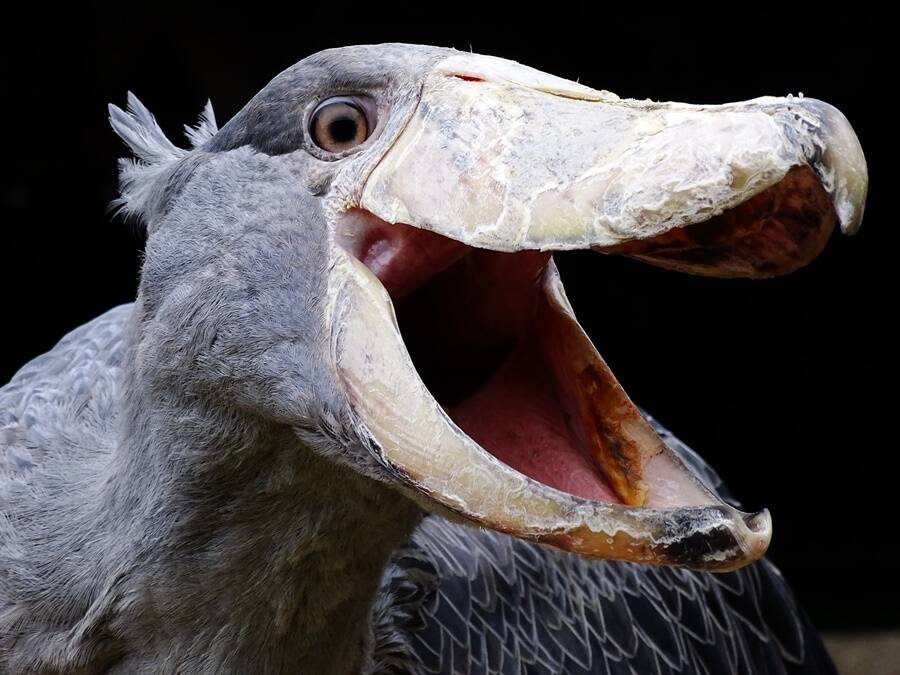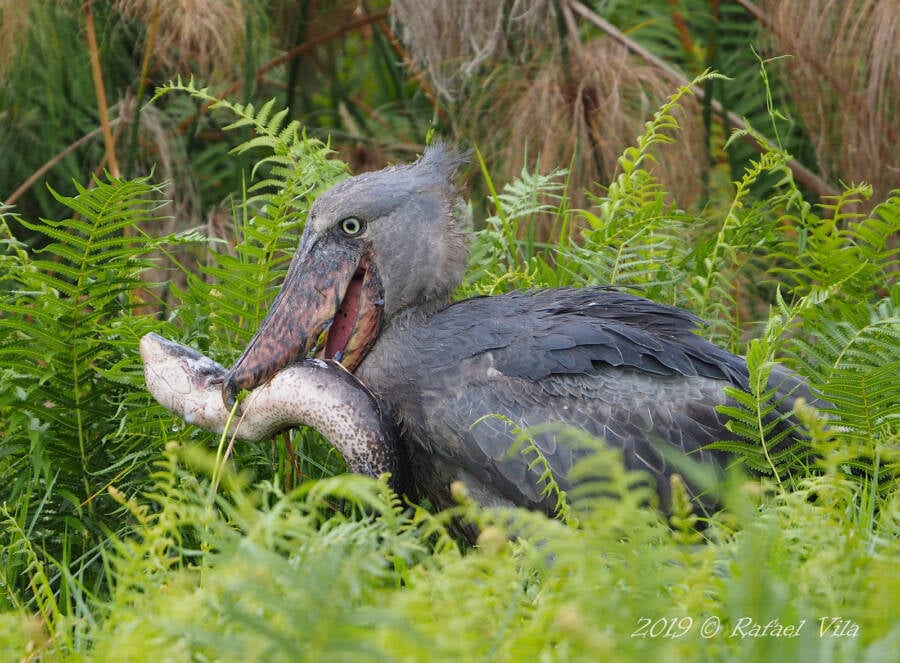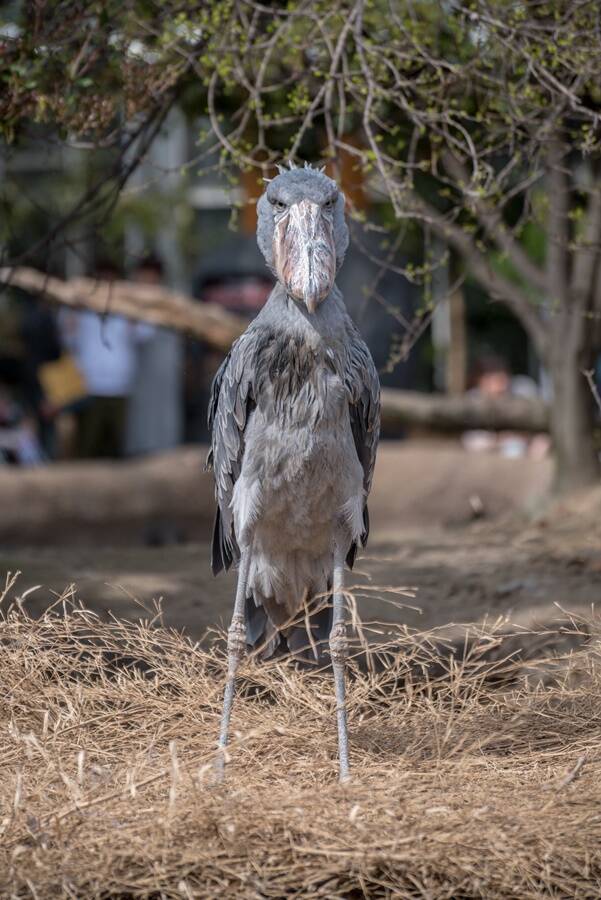The Shoebill Pelican, The Strange Creature That Sounds Like A Machine Gun
If any bird best displays the genetic relation between birds and dinosaurs, it's the shoebill pelican, a prehistoric-looking beast with a propensity for munching on crocodiles.
Found in the freshwater swamps of Africa, the shoebill (Balaeniceps rex) stands at an average height of four and a half feet and possesses a massive seven-inch beak strong enough to tear through a baby crocodile.
Its intimidating hollow beak resembles a heavy Dutch clog, which is where the Shoebill's somewhat silly moniker comes from. But the strength of this bird's massive beak is no laughing matter, as it is the third-longest bill among avian species in the world.
When the strange animal was first identified, scientists mistook it for a species of stork. Over time, however, scientists discovered that the shoebill actually shares more common traits with pelicans, particularly their violent hunting method.
Shoebills also share a few physical traits with herons, such as their powder-down feathers and their habit of flying with their neck retracted. But they were ultimately classified in an avian family of its own, the Balaenicipitidae.
The shoebill's appearance is downright Triassic, which is why they're commonly compared to dinosaurs. While it's true that birds evolved from a group of meat-eating dinosaurs called theropods, birds were also descended from a branch of much smaller theropods. In lieu of the large snouts of their distant cousins, modern birds have evolved beaks instead.
The shoebill's impressive beak serves multiple purposes. This weird animal uses it to produce machine gun-like noises which can attract mates and deter predators. It's also used as a practical tool to scoop water from nearby rivers and lakes and feed their young. But its most obvious use is as a hunting weapon.
Shoebills hunt during the day, using a stealth method of waiting for unassuming prey like frogs, lungfish, and even baby crocodiles. When its prey is close enough, the shoebill will lunge using its formidable beak, effectively crushing its prey in a single swoop.
Sadly, the population of these odd animals has declined drastically due to overhunting and the diminishing of their wetland habitat. According to the IUCN, there are only between 3,300 and 5,300 shoebills left in the wild today.





















